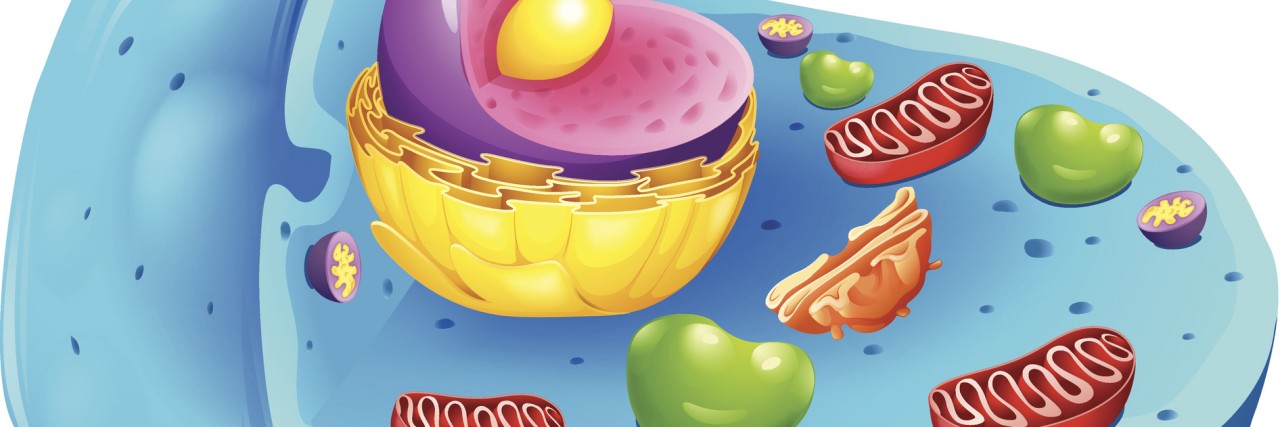September is Mitochondrial Disease Awareness Month, and knowledge is power.
Our daughter has mitochondrial complex I deficiency caused by mutations in her NUBPL gene. There are dozens of types of mitochondrial complex I deficiencies, but her particular type is rare. Because there are so many types of mitochondrial complex I disorders and each is different, we sometimes refer to our daughter’s type as “NUBPL,” the name of the gene affected.
When people think of “mitochondria,” many think of DNA from just the mother. This is true only with respect to some of the DNA making up the mitochondria. In fact, they are put together mostly from gene pairs with one gene from each parent (nuclear DNA), plus just a handful involving one gene coming from the mom (mitochondrial DNA). All of our cells (except red blood cells) contain mitochondria. The mitochondria produce the energy our cells need to function, to replicate, and to repair themselves. They are the “powerhouses” of the cell.
This “power” is produced through a series of chemical reactions taking place in five different physical structures. These are called complexes I through V (or 1 through 5). They work together like an assembly line. If a problem exists in one “complex,” it can harm production down the line in another, ultimately resulting in too little “energy” being produced. Like an actual power plant, the process of producing usable energy also produces chemical byproducts that can be toxic.
Our bodies clean these byproducts through, among other things, “anti-oxidants.” However, sometimes a person with a mitochondrial disease produces too many toxic byproducts for the anti-oxidants to work, leading to a build-up of toxins. This process is called “oxidative stress.”
Thus, a good analogy is a power plant with five buildings, each producing products that are sent down the line, ultimately producing energy from the final building, Complex V, while also producing polluted water that is filtered and cleaned by another facility before being released into a stream. A person with a mitochondrial disease has a problem in at least one building of the five. As a result, she may not produce enough product to be passed along and ultimately turned into energy to meet the needs of the cell (not enough energy is coming out of Complex V) or may be spitting out too much pollutant to be filtered and the water in the stream is getting polluted.
Either of these can result in premature cell death or impaired function.
The nature of these diseases is that they often cause damage over time — again, like pollution from a factory. Similarly, illness can increase energy needs of the body, and cells can become damaged because of their inability to meet the needs in times of higher demand. Both of these things occurs in all of us as we age (mitochondrial dysfunction is a significant contributor to the symptoms of old age, including wrinkles, loss of muscle, loss of brain function, clumsiness, and heart disease).
Patients with a primary mitochondrial disease just experience this fate differently, earlier, and in different parts of their bodies. Note, however, that this is not the “premature aging” disease. Regardless, by their very nature, these diseases often progress.
Different cell types have different energy needs. Skin cells, for example, need little energy, so contain few mitochondria. Heart, kidney, liver, and brain cells, on the other hand, have high energy needs, so contain the most mitochondria. Liver cells, for example, may contain as many as 2,000 mitochondria per cell. As a result, these parts of the body are susceptible to “mitochondrial diseases,” either because the energy needs are not being met, or in meeting them too much “pollution” is being produced.
Some of these diseases affect only one of these parts of the body, while others may affect multiple systems.
Our daughter’s disorder is a problem in “Complex I,” thus the name “mitochondrial complex I deficiency.” This is the largest of the five complexes, the one involving the most genes for its assembly and function. It is the most common place for these diseases to arise. However, knowing she has a disorder in Complex I tells you very little. Returning to the power plant analogy, for example, it is like telling you there is some sort of problem in “building one” of a five-building complex, but not knowing what that problem is; it could be something small, like a clogged toilet, or it could be something large, like the complete collapse of the building.
The devil is in the details.
Some Complex I deficiencies are quickly fatal; others are far more benign. Indeed, it is likely that many are so benign that a person can live a long healthy life without knowing they have a disorder. Still others may experience problems only late in life, such as developing Parkinson’s or heart disease. Thus, mitochondrial complex I disorders can range from quickly fatal to unnoticed and insignificant.
Image via Thinkstock.

